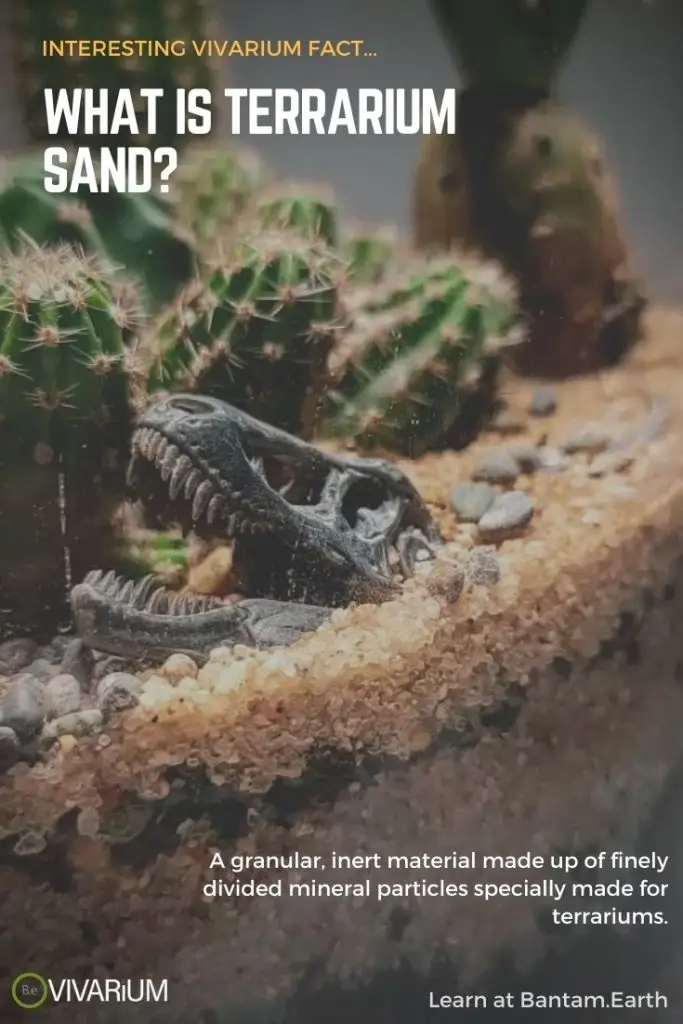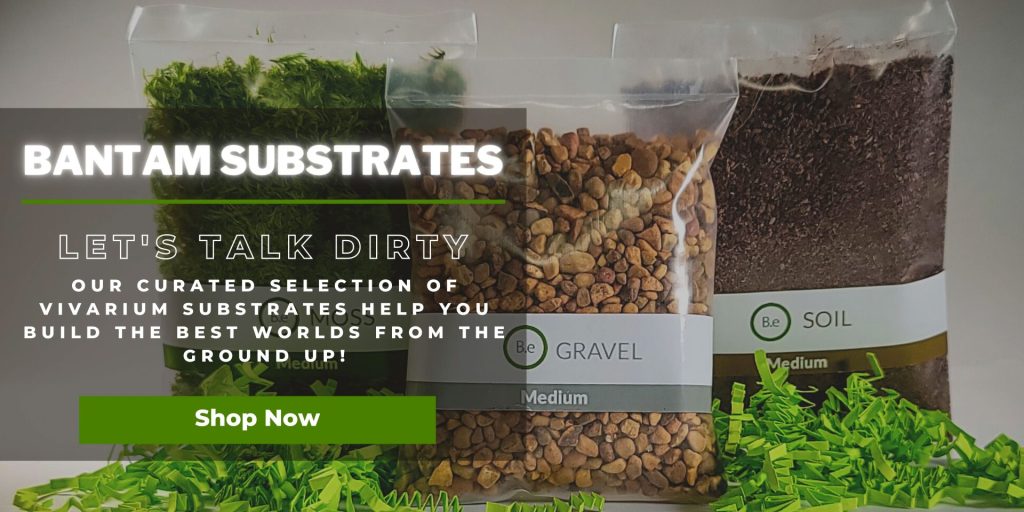One of the most versatile elements used for terrarium substrates is sand. When it comes to terrarium sand, there are different types available and many special features that can be taken advantage of.
In this blog post, we’ll discuss everything you need to know about sand used in terrain-dominant enclosures. From how to choose the right kind, prepping it for the terrarium, and decorating it to the benefits of using it. By the end, you’ll be an expert in selecting the best sand for your needs. Let’s get started!
Table Of Contents:
ToggleWhat Is Terrarium Sand?
Terrarium sand is a type of sand specially designed for terrariums. It is a granular, inert material made up of finely divided mineral particles. Sand is typically used to create a comfortable environment for plants and other creatures that a terrarium may contain.


Best Types of Terrarium Sand
When it comes to terrarium sand, it’s all about size. Selecting the right size of sand is essential to creating a stunning terrarium as it impacts drainage, aeration, and overall aesthetic.
The main types of grains available are Fines, Ultra-fine, Coarse, Extra-coarse, and Super-coarse. Each type offers unique benefits to help bring your terrarium vision to life in the most efficient and beautiful way.
Fine Grain Sand
The smallest grain size, known as ‘Fines’ is the most compact and easiest to shape for aesthetic purposes, making it great for filling in minute gaps between rocks and decorations. ‘Ultra-fine’ is the next size up and is used for crafting miniature landscapes as it is more malleable and easier to shape than fines.
Coarse Grain Sand
The ‘Coarse’ grain size is slightly larger and has excellent drainage capabilities, allowing water to pass through quickly instead of pooling. This makes it ideal for under-planting, while the larger ‘Extra-Coarse’ grain size is perfect for creating pathways or outlining mountain ranges.
The largest grain size is ‘Super-coarse’ which is ideal for creating the illusion of a beach or shoreline with ease due to its rugged look and feel.
Benefits of Using Terrarium Sand
Using the right type of sand in a terrarium has many benefits. Not only does it add a unique and visually appealing dimension to the terrarium, but it has no direct impact on the environment. In addition, it can provide an array of functional benefits to a miniature ecosystem as well.
Enhancing Drainage
One of the primary benefits of using sand in a terrarium setup is that it enhances drainage. This is crucial for maintaining an optimal environment, as poor drainage can lead to waterlogging and cause the plants to suffocate.
By improving the drainage, the soil will be able to hold more water and it will be easier to maintain a healthy moisture balance.
Terrarium sand provides better drainage because it is much more porous than regular soil. This allows the water to easily pass through the sand, rather than becoming trapped and pooling around the plants.
Furthermore, sand also allows air to easily pass through and circulate throughout the terrarium, which is essential for plant health.
Proper Air Circulation
Better air circulation within a terrarium isn’t usually something that comes to mind when we talk about sand. The sand works by allowing air to move more freely through porous areas in the substrate.
This prevents stagnant air pockets from forming, which in turn helps to eliminate mold and mildew due to humidity buildup. The sand also helps to keep the soil surface dry, which is important for encouraging microbial activity and beneficial bacteria to thrive in the terrarium’s soil.
Additionally, air circulation is also important for helping to keep root systems healthy, as it allows them to access needed oxygen from the soil.
By using sand in your terrarium setup, you can ensure that air is always moving in and around the root zone. This is especially important if you have live plants growing in the terrarium, as they require adequate air circulation to survive.
Decorative Uses
Sand can be used for decorative purposes in a terrarium in a variety of ways. You can layer different colored sand for an interesting look, or you can use light-colored sand to make the other decorations in your terrarium stand out.
You can also use sand to create unique features like hills and valleys, creating a more dynamic landscape for your terrarium.
Using sand in combination with other decorative items like stones, plants, and figurines adds texture, depth, and dimension to the terrarium.
Sands can be used as background for hardscapes like rocks, creating a beautiful contrast of colors and textures. Additionally, colored sands can be used to create interesting patterns and designs throughout the terrarium.
Terrarium Sand Preparation
When it comes to prepping a terrarium, the type of sand you use is one of the most important considerations. The right sand can help bring your terrarium to life, while the wrong type of sand could potentially cause problems down the road.
Choosing the right type of terrarium sand is essential to creating a successful environment for your plants and animals.
Picking The Best Type Of Terrarium Sand
There are several types of sand available for terrariums, ranging from play sands and aquarium sands to terrarium-specific sands. Depending on the size, purpose, and plant life of your terrarium, this guide should be a valuable aid in making a decision.
Some terrariums may require finer sand that won’t clog up the drainage system and can be used as a decorative element. Others may require coarse sand that will help retain moisture.
Cleaning The Sand
If you decide to purchase sand outside of our shop for your terrarium, you might need to clean it so that you don’t introduce any dirt or debris into the ecosystem. Simply adding the sand in its original form could result in contaminants that are dangerous to the plants and animals that are living in the terrarium.
Some sand suppliers may provide instructions on how to clean the sand. But as a general standard for cleaning, you can run it through a sieve to remove any debris.
Adding The Sand
Adding sand correctly to the terrarium is also important. Working from the bottom up, start by placing a layer of sand at the base of the terrarium substrate. The layer should be at least an inch thick for optimal drainage and air circulation.
After the layer of sand has been added, you can use the rest of the sand to create the desired aesthetic for your terrarium.
Conclusion
Using sand can help to enhance the look of your terrarium and give it a unique and stylish look. It is a great choice for drainage, air circulation, easy cleaning, and decorative purposes. Whether you are looking for a subtle earthy look or something more brightly colored, terrarium sand can help you create the look you’re looking for.
With a wide range of sand options to choose from, you are sure to find the perfect fit for your terrarium!
Frequently Asked Questions
Yes, sand can be used as a useful drainage layer in certain applications. It has excellent filtration qualities, allowing water to easily pass through while trapping pollutants and preventing them from getting into the water supply. Sand can also be a great option for planter boxes and other areas with poor drainage.
For building a terrarium, you should use aquarium–grade substrate, such as silica sand, for the bottom layer.
Sand made of crushed quartz is the best for terrarium projects, as quartz does not contain any added chemicals that can be potentially harmful to plants and animals.
Yes, you can use beach sand in a terrarium. Beach sand is great for mimicking a dry, sandy environment and provides essential minerals. I recommend sterilizing it first though.
To sterilize sand for a terrarium, you‘ll need to heat it in an oven at 230 degrees Fahrenheit for about 30 minutes. Be sure to cover the sand with aluminum foil for the best results. Never exceed 230 degrees, as this could damage the sand. Let the sand cool before using it in your terrarium.
Organic coarse sand is the best kind of sand for plants. It helps to loosen clay soils, improve drainage, and provide aeration for roots. Coarse sand also contains minerals that are beneficial to the growth and development of plants.






